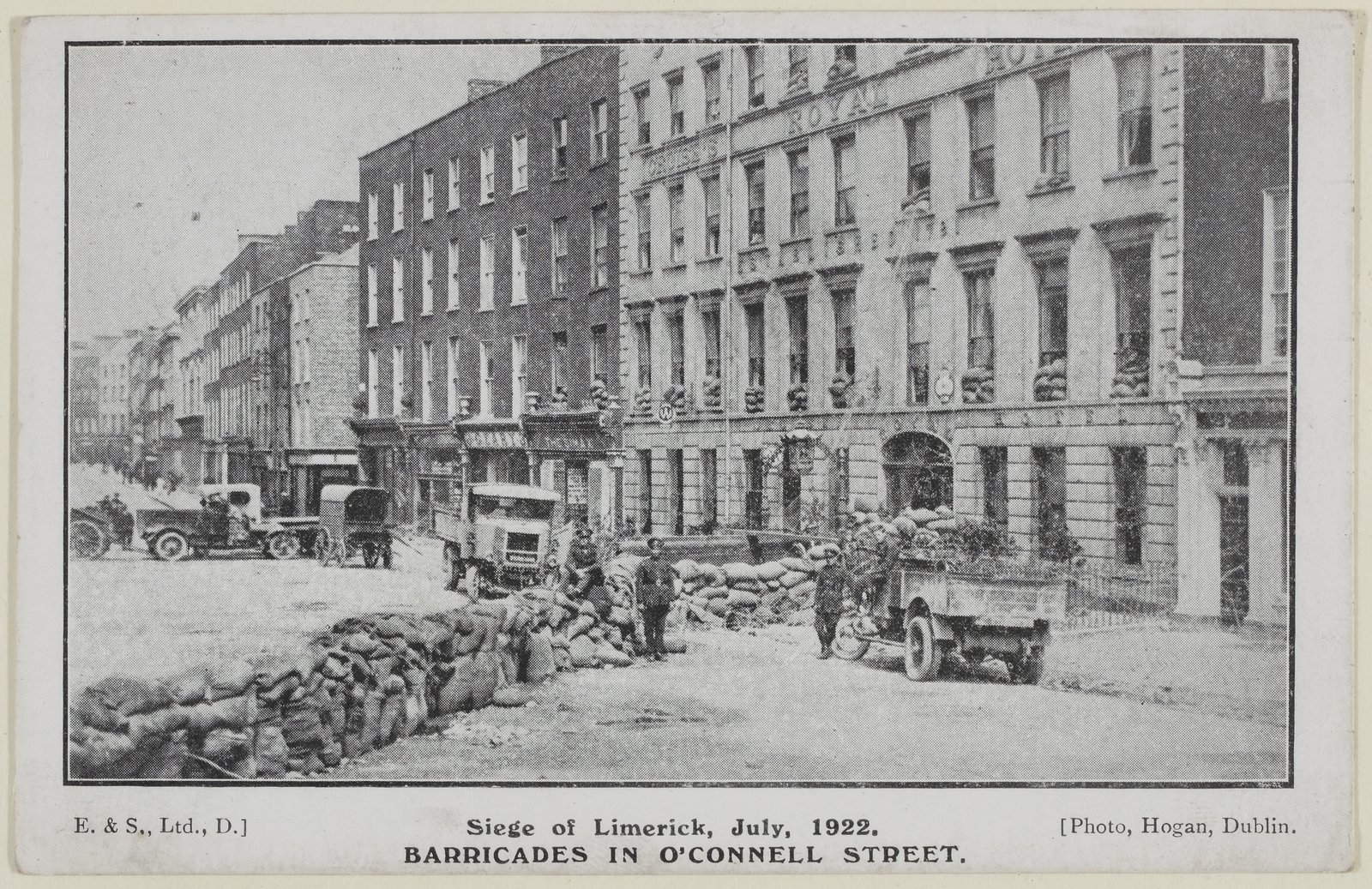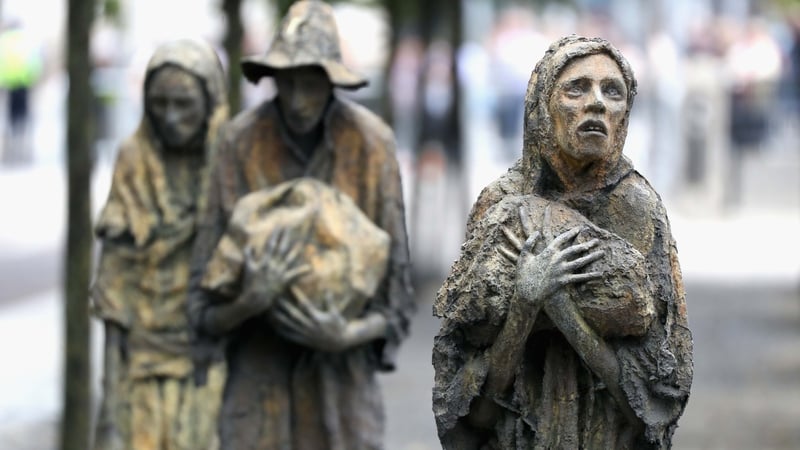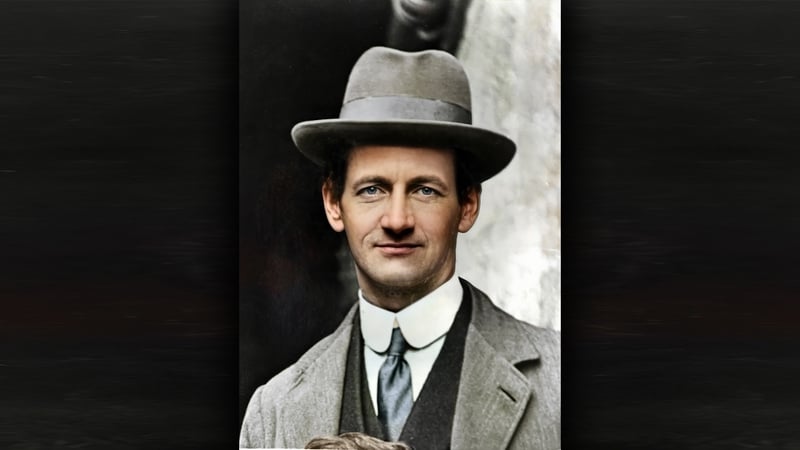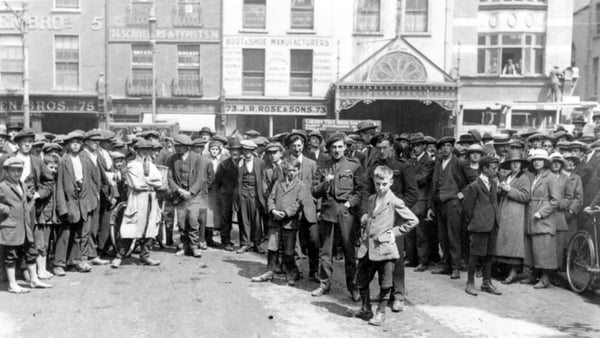Limerick city was the scene of tensions between the Free State Army and the IRA long before the Civil War officially began. When the British Crown forces began withdrawing from their barracks in the south, the Provisional Government's policy was that the local army unit was to take control of any evacuated barrack in their locality regardless of whether they were pro or anti-Treaty.
However, Limerick city was regarded as too strategically important to be left under the control of the IRA's Mid-Limerick Brigade who opposed the Treaty. In March 1922 the 1st Western Division of the National Army was ordered to advance from Clare into Limerick city, to take over the two military barracks being evacuated by the British resulting in a tense armed stand-off with the local IRA. Eventually an agreement was brokered between the two sides and the Government forces withdrew leaving the city in undisputed Republican control.

Members of the anti-Treaty IRA at the entrance to the hotel in Limerick where they were quartered in March 1922. Image: Bettmann/Getty Images
On 28 June, after three further months of negotiations aimed at preventing conflict, the Free State Army, acting on Michael Collins' orders and armed with artillery borrowed from the British Army, attacked Rory O'Connor's anti-Treaty IRA faction in the Four Courts beginning the Civil War. Senior IRA leader Liam Lynch had escaped from the Dublin fighting and upon O'Connor's capture became Chief of Staff of the IRA.
Acting on Lynch's orders the IRA began consolidating their positions in the rest of Ireland and formed a strongly defended frontier stretching from Limerick city to Waterford dubbed the 'Munster Republic'. As soon as word of the shelling of the Four Courts spread, IRA units from Cork and Kerry began marching to Limerick to re-inforce the IRA garrison there.

Liam Lynch in early 1922. Detail from a photograph of Lynch with leaders on both sides shortly before the Civil War © RTE Photographic Archive
'The Holding of Limerick'
A force of 400 Free State troops managed to infiltrate the city under the cover of darkness. They were commanded by two of the most successful flying column leaders of the War of Independence, Michael Brennan from East-Clare and Donnachadh O'Hannigan from East Limerick. The Free State forces commandeered several buildings in the city centre including the former RIC Barracks in William Street, Cruise's Hotel and Limerick Prison but were far outnumbered by the 700 IRA Volunteers under Liam Lynch's command who held the city's four military barracks.
Brennan's troops were poorly armed and ill-prepared for a fight, so he approached Lynch seeking a new peace agreement similar to the one brokered in March:
"The holding of Limerick was the holding of the whole south and west ... My whole fright was that Lynch would attack me before the guns turned up, because we couldn't last. I had to keep him talking to keep him from attacking. We met and we met altogether about a dozen times. We used to meet in the presbytery of the Augustinian church where we argued and argued."

Michael Brennan in Kerry in 1922. Image courtesy of the National Library of Ireland
Brennan and O'Hannigan signed an agreement with Lynch on 7 July which called for a meeting of the leading military commanders from both armies 'in the interests of a united Ireland, and to save our country from utter destruction'. Liam Lynch believed this was a major success, which would lead to republican control of all of Munster.
Furthermore, he hoped that it would take the three Free State military commanders involved in the negotiations – Brennan, O'Hannigan and Seán Mac Eoin – out of the war along with the thousands of troops loyal to them. However, four days later when Free State reinforcements arrived from Dublin, Brennan immediately sent word to Lynch that the agreement was cancelled.
The Battle begins
Fighting in the city began with a failed Free State attack on the IRA garrison in the Ordnance Barracks (now the Limerick Court Office on Mulgrave Street) and the battle soon spread to other areas of the city centre through Roche's Street, Thomas Street and William Street.
This map shows the events during the ten-day Battle of Limerick July 1922. Click to zoom in.

The crack of rifle fire, the dull thud of grenades exploding in distant streets meant that the news of the outbreak of hostilities soon reached the ears of the anti-Treaty IRA garrisons in more far-flung posts, many of whom received no official notice of the ending of the ceasefire agreement with the Free State Army until they were attacked.
The following day fierce fighting broke out in the docklands area along Henry Street, Cecil Street, Steam Boat Quay and Bishop's Quay as Free State soldiers launched a sweeping attack from the centre of the city towards the docklands where the IRA held Russell's Mills, the GPO and Daly's Bakery.
The republicans managed to repel the Free State attack, inflicting minor casualties. The fighting for much of the week was of a similar nature – running street battles, surprise attacks followed by swift retreats, single armoured cars sent out to launch dramatic attacks on fortified buildings with little effect.

Postcard featuring a photograph taken by D. Hogan, depicting O'Connell Street, Limerick with barricades. Image courtesy of the National Library of Ireland
After eight days of fighting the Free State soldiers had managed to capture a few commercial buildings that had been commandeered by the IRA. They had not been able to force them from any of the city's four barracks. The Free State Army had made several determined attacks on the isolated republican garrison in the Strand Barracks (now the Castle Court Apartments on Clancy's Strand) but the IRA Commander Connie McNamara resisted calls to surrender, promising his Free State opponents that
"I will not surrender while I have ammunition left".

A photograph taken by D. Hogan of the ruins of the Garrison Church barracks in Limerick in July 1922. Image courtesy of the National Library of Ireland
Turning tide
It was the arrival of reinforcements and artillery on Wednesday 19th July which changed the fighting decisively in favour of the Free State Army. Artillery fire reduced part of the Strand Barracks to rubble forcing its republican defenders to surrender. Realising that none of their positions could withstand artillery fire, the IRA gave the order to evacuate and burn their remaining positions at the Castle Barracks, the Ordnance Barracks and finally the New Barracks to prevent their occupation by the advancing Free State Army.
Madge Daly recalled that the very last group to leave the New Barracks as the buildings became a blazing inferno were her comrades in Cumann na mBan:
"The IRA in the New Barracks were supported by Cumann na mBan. The hospital there was run by Nurse Laffan and Nurse Connerty, a Limerick girl home from New York. When the Republicans evacuated the city, the women remained in the barrack until all the men had got clear, and then returned home ready to undertake any duty the Republic required."
Retreat from Limerick
On the morning of 21 July the Republicans retreated towards the rural towns of Adare and Kilmallock where some the Limerick IRA Volunteers attempted to mount a new defensive line. Many of the Cork and Kerry fighters departed to continue the 'defence of the Republic' in their home counties. At least twenty-six people were killed during the fighting in Limerick city including nine Free State soldiers, five anti-Treaty IRA Volunteers and a dozen civilians.

National Army troops outside Cruise's Royal Hotel Limerick in July 1922. Image courtesy of the National Library of Ireland
IRA veteran Tom Kelliher later recalled the dismay he and his comrades felt during the retreat from Limerick:
"We were in a tight situation and in the end, we had no chance against them. Retreat became inevitable and when it came, [it] resembled a stampede. ... We fell back through Adare, finally ending up in Buttevant ... We felt hopelessly disillusioned and disheartened. The whole flaming struggle seemed to be leading nowhere."
Liam Lynch knew that the capture of Limerick city had been a major victory for the Free State Army, and he wrote to Ernie O'Malley:
'The agreement reached at Limerick was broken by the enemy ... I believe we will eventually have to destroy all our posts and have to operate as of old in flying columns.'
This article is part of the Civil War project coordinated by UCC and based on The Atlas of the Irish Revolution edited by John Crowley, Donal Ó Drisceoil, Mike Murphy and John Borgonovo. Its contents do not represent or reflect the views of RTÉ.












































